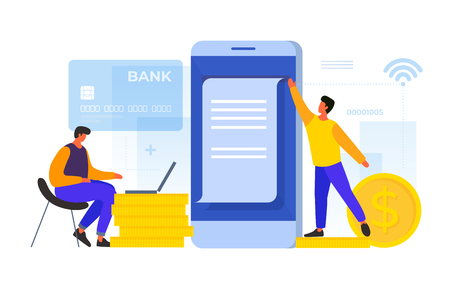1. Understanding SBA Loan Programs
If you’re thinking about applying for an SBA loan, it’s important to first get familiar with the main types of SBA loans and their eligibility rules. The Small Business Administration (SBA) partners with lenders to help small businesses get funding on terms they might not qualify for elsewhere. Here’s a quick breakdown of the most popular SBA loan programs and what they’re best for:
| SBA Loan Program | Loan Amount Range | Best For | Basic Eligibility |
|---|---|---|---|
| 7(a) Loan Program | Up to $5 million | General business needs: working capital, equipment, real estate | For-profit business, based in the U.S., reasonable owner equity, unable to get funds elsewhere |
| 504 Loan Program | Up to $5.5 million | Purchasing fixed assets: land, buildings, major equipment | For-profit business, net worth under $15 million, average net income under $5 million after taxes for past 2 years |
| Microloan Program | Up to $50,000 | Startups or very small businesses needing smaller amounts of capital | Must meet lender’s credit requirements; nonprofit childcare centers are also eligible |
| SBA Express Loans | Up to $500,000 | Faster approval for smaller funding needs | Similar to 7(a); streamlined application process; decision within 36 hours |
How to Choose the Right SBA Loan Program for Your Business
Selecting the right SBA loan depends on your business goals and how much you need to borrow. If you need a large amount for expansion or buying property, the 504 or 7(a) program could be a good match. If your business is just starting out and needs a small boost, the Microloan program is designed for you. For those who value speed, SBA Express might be your best bet.
Main Eligibility Factors You Should Know About:
- Your business must operate in the U.S.
- You should have invested some of your own money into the business.
- You must show that you couldn’t get similar funding elsewhere.
- Your credit history and ability to repay will be reviewed by lenders.
- Certain types of businesses (like those involved in illegal activities) aren’t eligible.
Quick Tip:
The more prepared you are with documents and a clear explanation of why you need the loan, the easier it will be to figure out which program fits your situation best. Take time to review each option before moving forward with your application.
2. Gathering Essential Documentation
Getting your SBA loan application ready means putting together the right documents. Lenders and the Small Business Administration want to see a clear, complete picture of your business and your personal finances. Having everything organized not only makes the process smoother but also shows that you’re serious and prepared. Here’s what you’ll need to gather:
Key Documents for Your SBA Loan Application
| Document Type | What It Includes | Why It Matters |
|---|---|---|
| Business Plan | Company overview, market analysis, products/services, marketing strategy, management team, financial projections | Shows lenders you have a clear plan and understand your market |
| Financial Statements | Profit & Loss (P&L), Balance Sheet, Cash Flow Statement (usually for the past 2-3 years) | Demonstrates your business’s financial health and stability |
| Tax Returns | Both business and personal tax returns (typically last 2-3 years) | Lenders review these to verify income and spot any red flags |
| Personal Background & Financial Statement | Your resume, personal history, net worth statement, credit report | Shows your background and ability to manage finances responsibly |
| Legal Documents | Business licenses, articles of incorporation, leases, contracts with suppliers/customers, franchise agreements (if applicable) | Confirms your business is legitimate and authorized to operate |
| Ownership & Affiliations Information | Details about owners with 20%+ stake, other businesses you own or partner with | Lenders need to know who controls the business and any potential conflicts |
| Collateral Documentation | Papers proving ownership or value of assets offered as collateral (real estate, equipment, inventory) | Banks want assurance they can recover their money if needed |
Tips for Organizing Your Documents
- Create a Checklist: Make a list of required documents so nothing gets missed.
- Keep Digital Copies: Scan everything into PDF format—most lenders prefer digital files.
- Label Clearly: Name each file or folder by document type and year for easy reference.
- Add Explanatory Notes: If there’s anything unusual in your finances or paperwork, include a short note to explain it up front.
- Double-Check for Completeness: Missing information slows down processing or could result in rejection.
What to Do Next?
The more prepared you are with these documents, the easier the rest of the SBA loan process will be. Take your time to collect everything carefully before moving forward with your application. In the next section, we’ll talk about how to fill out the actual forms you’ll need for submission.

3. Strengthening Your Business Profile
Boosting Your Credit Score
Lenders look closely at both your personal and business credit scores when you apply for an SBA loan. A good credit score can help you qualify for better rates and terms. Here are some tips to improve your credit:
- Pay Bills on Time: Consistently paying bills before the due date builds a positive payment history.
- Reduce Debt: Keep your credit card balances low compared to your limits.
- Check Your Credit Reports: Review your reports for errors and dispute any inaccuracies.
- Avoid Opening Too Many Accounts: Each new account can lower your score slightly.
Credit Improvement Checklist
| Step | Description |
|---|---|
| Review credit reports | Request free annual reports from Experian, Equifax, and TransUnion |
| Dispute errors | Contact credit bureaus to fix mistakes |
| Pay down high balances | Aim to use less than 30% of available credit |
| Set up payment reminders | Use apps or calendars to avoid late payments |
Organizing Business Financials
Your financial records tell the story of your business. SBA lenders want to see that you have a solid grasp of your finances. Make sure to organize key documents like:
- Profit and Loss Statements (P&L)
- Balance Sheets
- Tax Returns (typically last 2-3 years)
- Bank Statements (recent 6-12 months)
- Accounts Receivable/Payable Aging Reports
Financial Organization Table
| Document Type | Purpose |
|---|---|
| P&L Statement | Shows revenue, expenses, and profit over time |
| Balance Sheet | Presents assets, liabilities, and equity snapshot |
| Tax Returns | Confirms reported income and verifies legitimacy |
| Bank Statements | Demonstrates cash flow stability and trends |
| A/R & A/P Reports | Highlights money owed to/owed by business |
Articulating Your Business Purpose & Growth Plans Clearly
Lenders want to know why you need the loan and how you plan to use it. Be clear about your business’s mission, target market, and future growth strategies. Consider these points when preparing your application:
- Your Mission: What problem do you solve? What makes you unique?
- Your Target Customers: Who are they? How do you reach them?
- Your Growth Plan: How will the loan help expand or strengthen your business?
- Your Revenue Projections: Provide realistic sales forecasts supported by data.
- Your Use of Funds: Detail how every dollar will be spent (e.g., equipment, hiring, marketing).
SBA Loan Narrative Outline
| Narrative Element | Description & Example Questions Answered |
|---|---|
| Business Overview | What does your business do? When was it founded? |
| Loan Purpose Statement | Why do you need this SBA loan? |
| Growth Strategy Summary | How will this loan help achieve your goals? |
| Main Competitive Advantages | What sets you apart in the market? |
| Sustainability Plan | How will you repay the loan? |
Taking the time to strengthen your business profile not only increases your chances of approval but also sets you up for long-term success with or without an SBA loan.
4. Working with Lenders and Advisors
Getting an SBA loan can feel overwhelming, but you don’t have to go through the process alone. By working with lenders and advisors who know the ins and outs of SBA loans, you can boost your chances of approval and make the whole experience much smoother.
Why Consult SBA-Approved Lenders?
SBA-approved lenders are banks or credit unions that the Small Business Administration trusts to handle their loan programs. These lenders understand exactly what documents you need, how to fill out forms, and what pitfalls to avoid. They can:
- Answer questions about SBA requirements
- Help you choose the right loan program
- Guide you on preparing a strong application package
- Speed up the review process by catching errors early
The Role of Small Business Development Centers (SBDCs)
Your local SBDC is a fantastic resource for small business owners applying for SBA loans. They offer free or low-cost guidance on everything from writing a business plan to understanding your financial statements. SBDCs can also help you:
- Review your loan application before submission
- Refine your business plan for lenders
- Understand market research and industry trends
- Connect with other useful resources in your community
Other Professionals Who Can Help
Besides lenders and SBDCs, you might want to talk to accountants, lawyers, or business consultants during your application process. Here’s a quick overview:
| Professional | How They Help |
|---|---|
| Accountant | Prepares and reviews financial documents; ensures accuracy in your numbers |
| Lawyer | Makes sure all legal documents are correct; helps with contracts or leases if needed |
| Business Consultant | Offers advice on strategy, operations, and growth planning to strengthen your application |
Tips for Working With Advisors Effectively
- Be honest about your business situation—advisors are there to help, not judge.
- Bring all necessary documents when meeting with lenders or advisors.
- Take notes during meetings so you remember key points and next steps.
- Ask questions if anything is unclear; there’s no such thing as a silly question.
- Follow up on their suggestions promptly to keep your application moving forward.
The Bottom Line on Teamwork
You don’t have to navigate the SBA loan application process by yourself. Leveraging the knowledge of experienced lenders, SBDCs, and other professionals can help you avoid common mistakes and set your business up for success.
5. Application Checklist and Common Pitfalls
When youre ready to apply for an SBA loan, being organized is key. Using a detailed checklist helps you make sure nothing is missing from your application. Many applications get delayed or denied because of small, avoidable mistakes. Below, youll find a straightforward checklist and a table highlighting common pitfalls so you can stay on track.
SBA Loan Application Checklist
- Business plan with financial projections
- Personal and business tax returns (typically last 2-3 years)
- Personal financial statement
- Business financial statements (profit & loss, balance sheet, cash flow)
- Business debt schedule
- Ownership and affiliations information
- Business licenses and registrations
- Articles of incorporation or organization
- Lease agreements (if applicable)
- Resumes of key management team members
- Collateral documentation (if required)
- Loan application form (SBA Form 1919 or lenders form)
Common Mistakes to Avoid
| Mistake | How It Affects Your Application |
|---|---|
| Missing documents | Leads to delays or automatic rejection |
| Inaccurate financials | Makes lenders question your reliability |
| Unclear business plan | Lowers confidence in your business idea |
| Not disclosing all debts/liabilities | Affects your credibility and approval odds |
| Poor credit history explanation | Lenders may not understand past issues without context |
| No proof of collateral (if required) | Your loan could be denied if security isn’t clear |
| Incomplete forms or unsigned documents | Applications can’t be processed until fixed |
Helpful Tips for a Smooth Process
- Double-check every document before submitting.
- If unsure about a requirement, ask your lender—don’t guess.
- Keep copies of everything you submit.
- Respond quickly if the lender requests more info.
- If you hit a snag, don’t panic; many applicants need to fix minor errors.
The SBA loan application process can seem overwhelming, but staying organized and avoiding common mistakes greatly increases your chances of getting approved. Use this checklist as your guide, and you’ll be one step closer to securing the funding your business needs.


